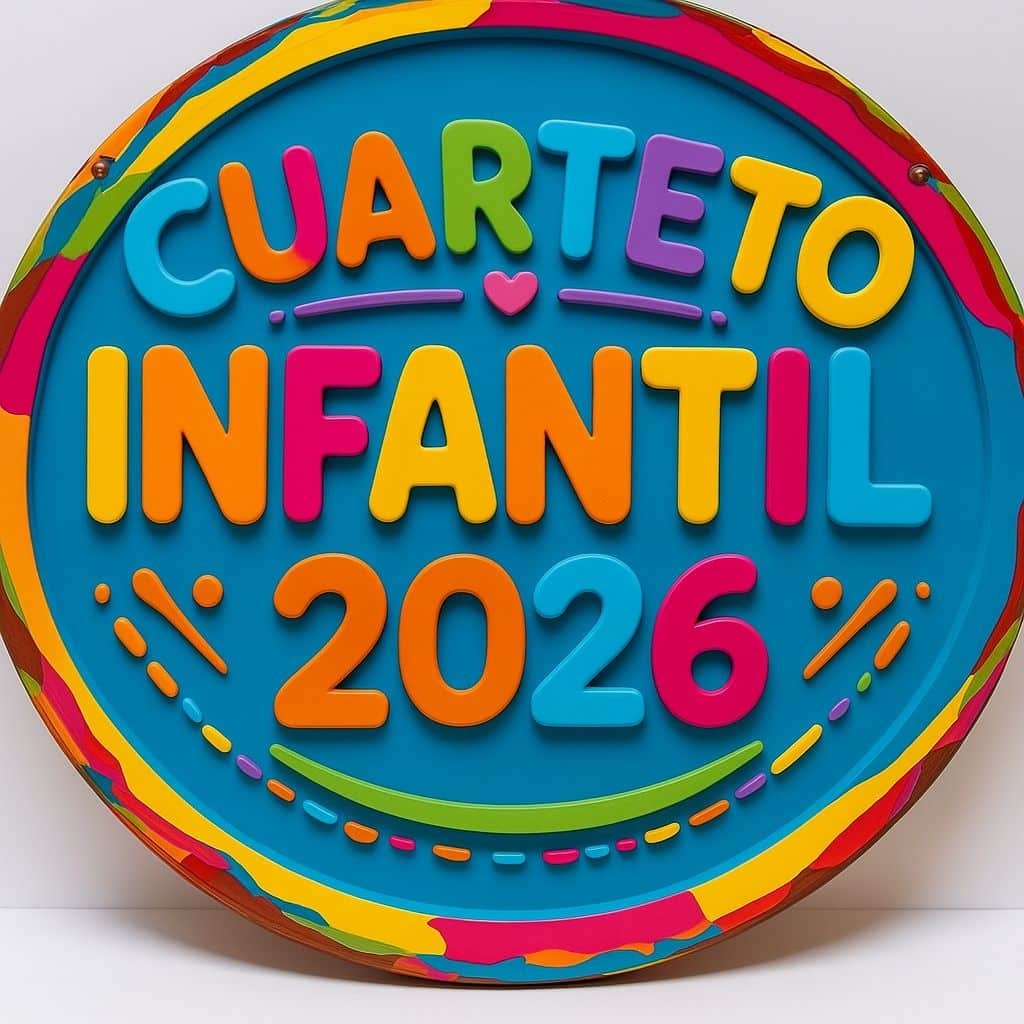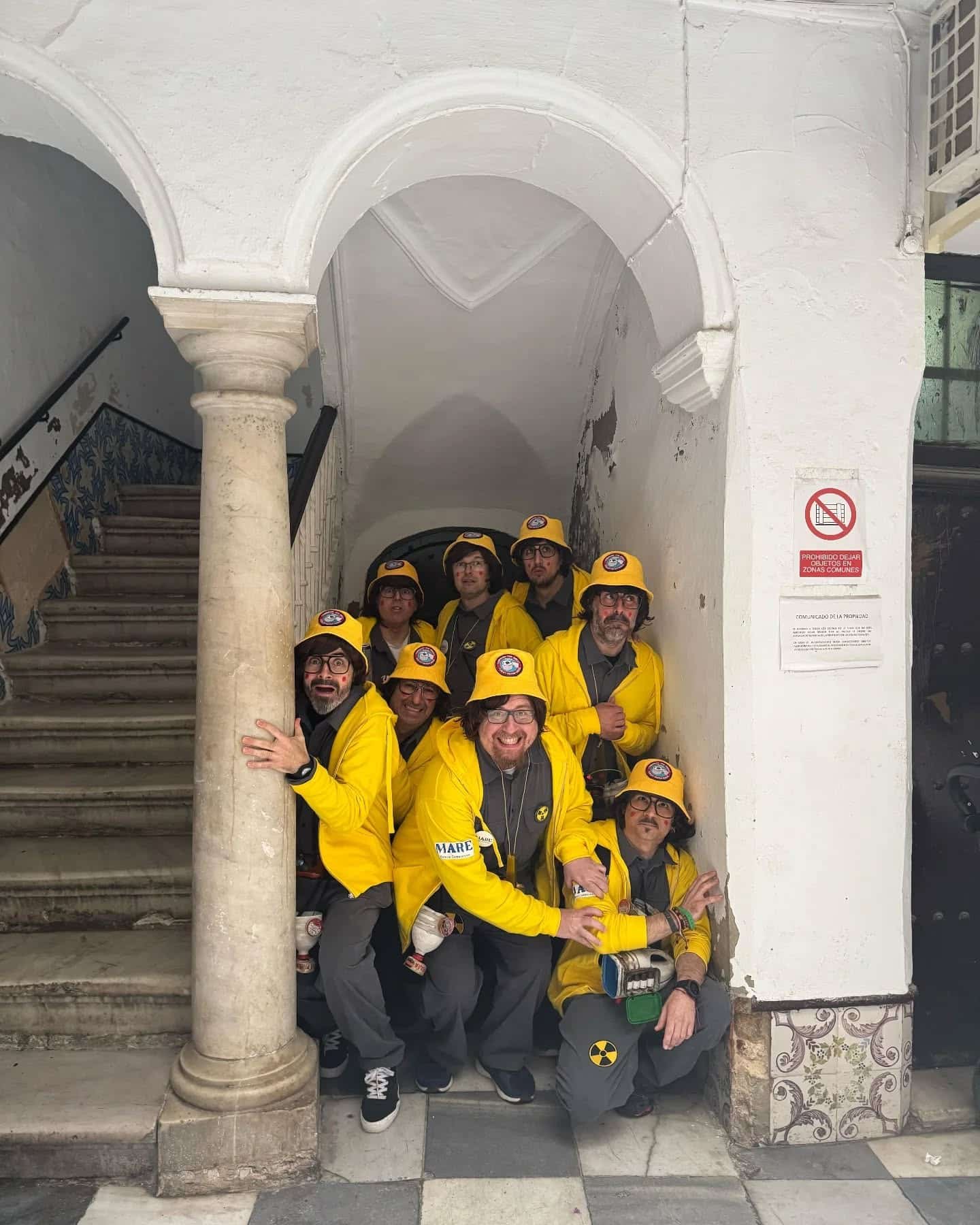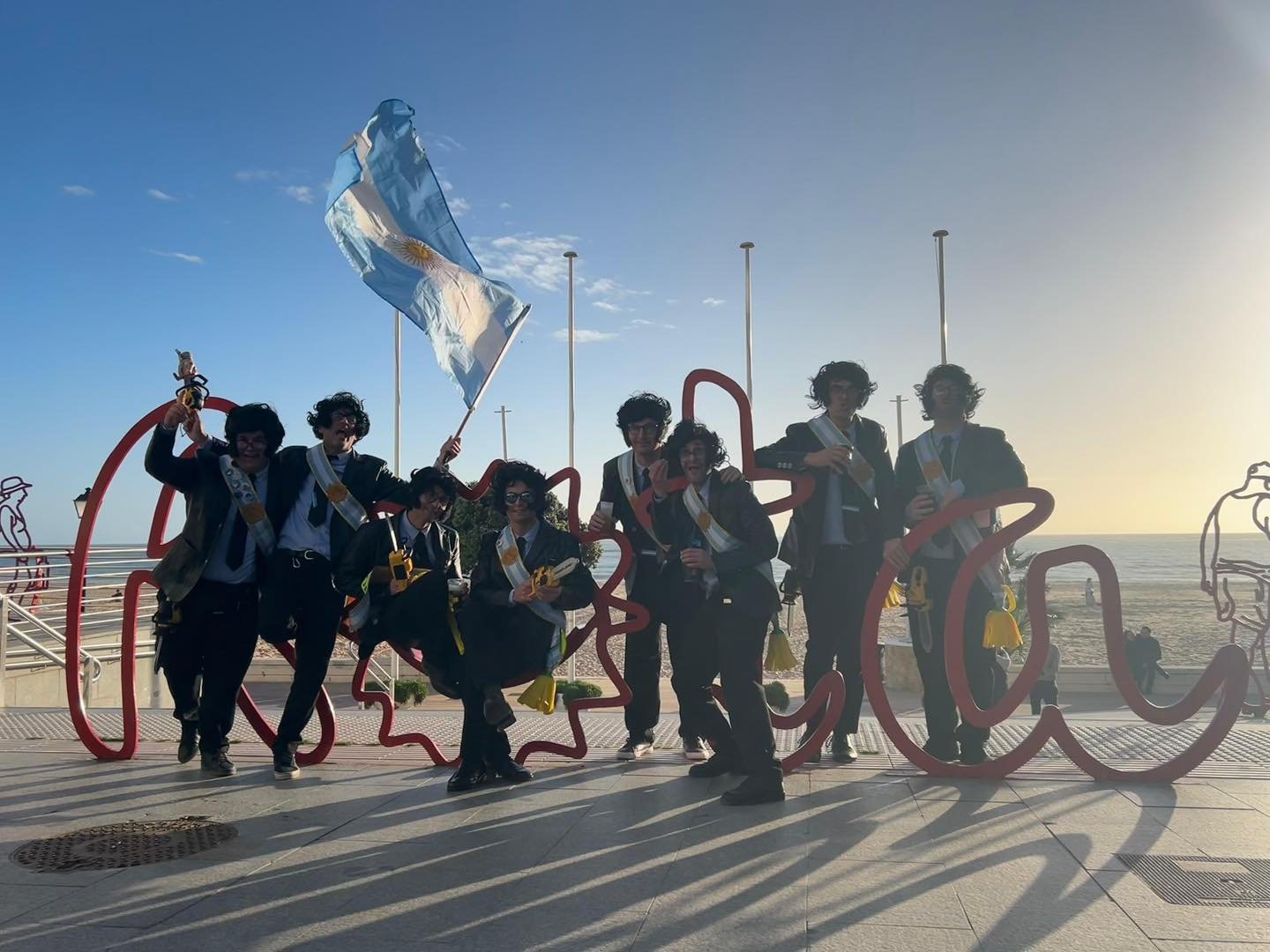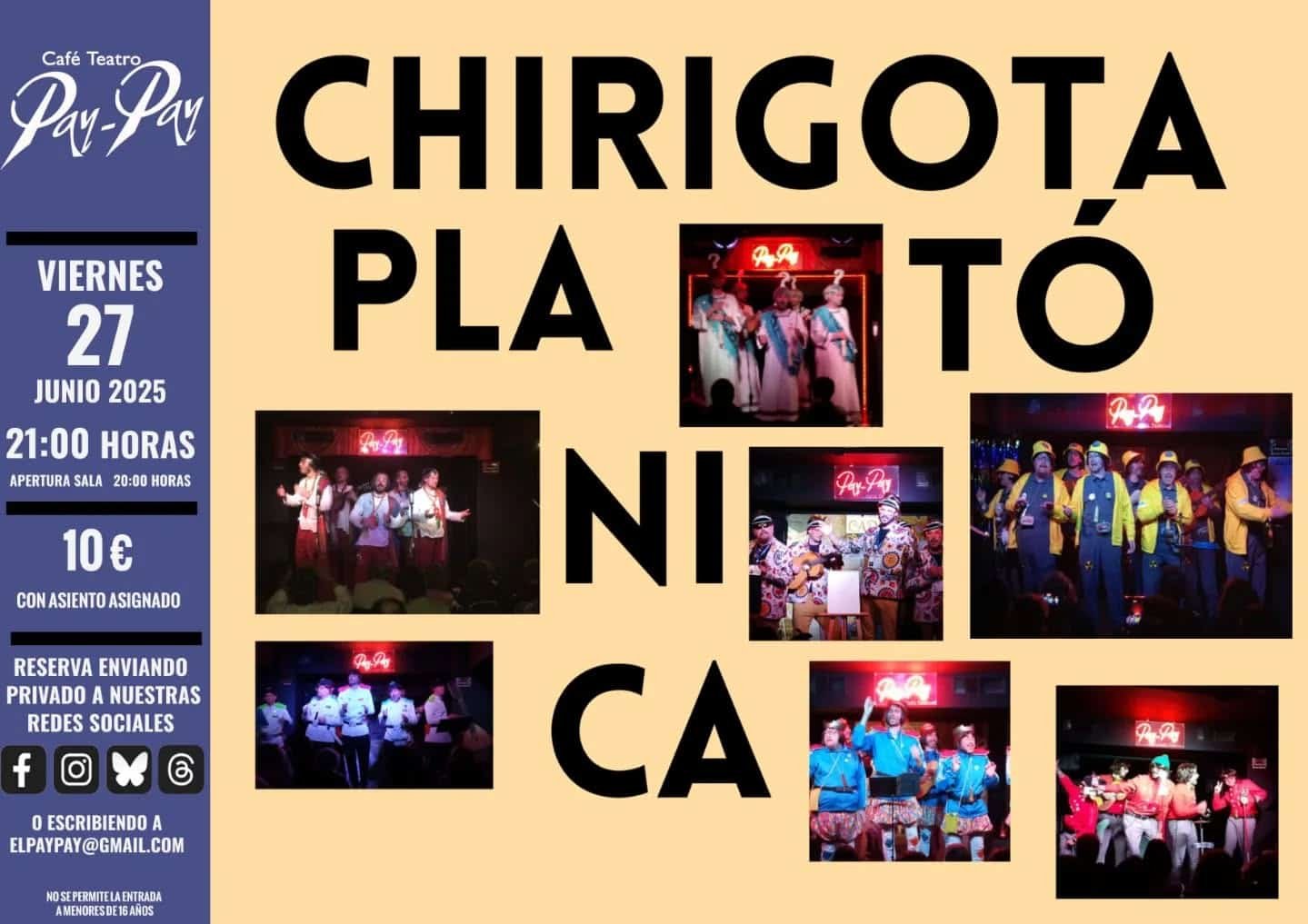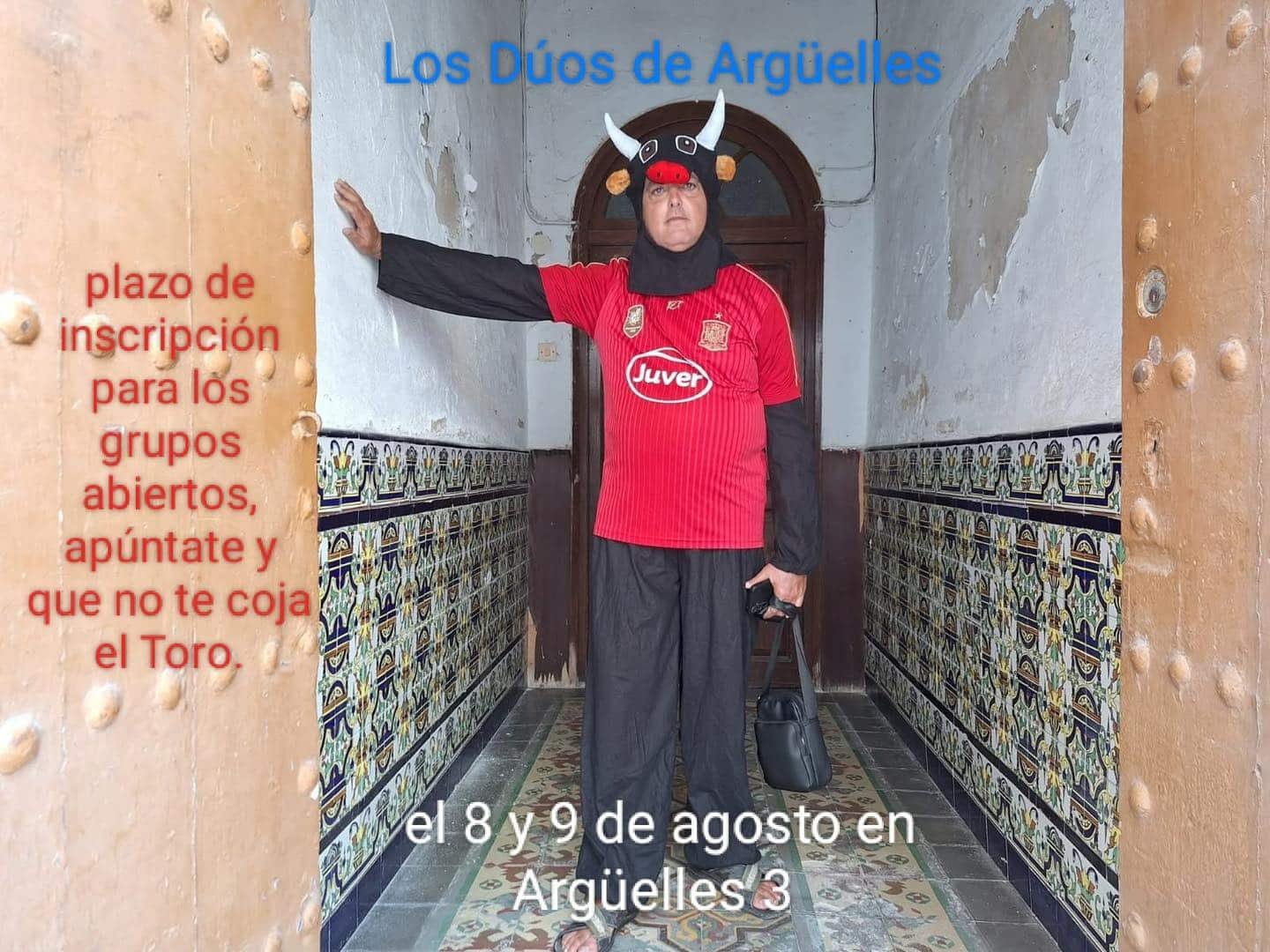Carnaval de Cádiz – Spain 2026
Background & History
- Carnaval de Cádiz, Spain’s most exuberant and satirical pre-Lenten bacchanal, traces its raucous roots to the 16th century when Genoese merchants docked in Cádiz—the oldest continuously inhabited city in Western Europe, founded as Gadir by Phoenicians in 1100 BC—importing Venetian mask traditions that mingled with local Moorish carnivalesque and Roman Saturnalia echoes, evolving from discreet 1540s processions to full-throated 18th-century chirigotas (satirical choirs) mocking the Inquisition, a defiant spark in Andalusia’s Catholic tinderbox.
- The modern frenzy crystallized in the 19th century amid Cádiz’s sherry trade boom and liberal uprisings (1812 Constitution birthplace), with the first recorded comparsa (comparsa group) in 1850s parades, where costumed troupes lampooned elites; the 20th century saw interruptions during the Spanish Civil War (1936-39) and Franco dictatorship (1939-75), when underground peñas (flamenco clubs) kept the flame flickering, resuming triumphantly in 1947 as a symbol of post-war resilience, declared a Festival of International Tourist Interest in 1967.
- By the 1970s, amid democratic transition, Carnaval ballooned to 10 days of 100+ groups, with the Gran Teatro Falla’s COAC (Official Carnival Groups Contest) since 1900 becoming its beating heart, featuring 30-40 comparsas, 50 chirigotas, 20 coros, and 15 cuartetos; the 1980s corporate sponsorships from sherry giants like González Byass amplified its reach, while 1990s EU funds professionalized staging, reflecting Cádiz’s role as Andalusia’s “puerta de Europa” (Europe’s gateway) with 60% foreign influences.
- Culturally, Carnaval embodies Cádiz’s “chico” (cheeky) spirit—where humor disarms hierarchy in a city of 116,000 facing 25% unemployment—a UNESCO-recognized Intangible Cultural Heritage (2011) blending satire, music, and absurdity to critique power, fostering social cohesion amid 20% migrant population; by 2025’s edition (February 27–March 9), it drew 200,000+ revelers, generated €15 million in tourism, and featured 120 groups, with 2025 winners like “Los Invisibles” comparsa satirizing invisibility.
- The 2026 edition, the 180th since formal records, from February 12–22 (Thursday–Sunday, traditional Shrove Thursday to Ash Wednesday eve, confirmed via COAC dates starting January), themed “Fronteras del Absurdo” (Absurd Frontiers) to probe migration and absurdity, builds on 2025’s 91% Falla occupancy; organized by Cádiz Ayuntamiento under coordinator María del Carmen Castineira Ruiz (contact via LinkedIn), it anticipates 250,000 attendees across 10 days, aligning with Andalusia’s €1.5 billion carnival economy and Jerez Flamenco Festival synergies.
- Historically, evolutions from 16th-century masks to 21st-century TikTok chirigotas underscore its adaptive absurdity, with interruptions like 2022’s June shift for COVID (9-19 June) reverting to February; growth includes 15% annual rise, influencing Spain’s €800 million festive sector through 70% local groups and inspiring offshoots like Chiclana’s “Mini-Carnaval,” with 2026 eyeing hybrid streams for global gaditanos.
- Carnaval de Cádiz reveres the city’s Phoenician port legacy—where Hannibal docked in 206 BC—while lampooning modern follies like overtourism (up 30% since 2019), positioning it as Europe’s “Mardi Gras of Wit” and a blueprint for satirical festivals in sherry-soaked Cádiz, where 2026’s edition honors 180 years of coplas’ cutting edge.
Event Highlights
- Main activities or performances: The COAC Grand Final on February 20 at 21:00 in Gran Teatro Falla, a 1,500-seat 1900s horseshoe hall, where 10 finalist groups (5 comparsas, 3 chirigotas, 2 coros) compete for prizes in a 4-hour satire storm, with 2025 winners like “El Manicomio” comparsa (Jona’s 20th anniversary) lampooning madness for 1,200.
- Main activities or performances: The “Carrusel de Coros” choir carousel on February 15 at 12:00 in Plaza San Juan de Dios, 20 coros on bateas (floats) parading tanguillos through streets for 10,000, a 19th-century tradition blending harmony with humor on current events.
- Main activities or performances: Chirigotas street roams on February 18 at 18:00 in Calle Pelota, 50 groups of 10 in whistle-pito satire squads mocking politicians for 5,000, evolving from 1850s Genoese imports to TikTok virals.
- Main activities or performances: Comparsas parades on February 21 at 11:00 from Plaza de la Hispanidad, 30 groups of 15 in guitar-drum conga lines satirizing society for 20,000, a staple since 1900 with 2025’s “Lxs Invencibles” female comparsa shining.
- Main activities or performances: Cuartetos absurd theater on February 19 at 20:00 in Falla, 15 quartets in clownish sketches for 1,000, a 1950s innovation blending vaudeville with coplas critique.
- Special traditions or features: The “Pregón Infantil” kids’ opening on February 12 at 20:00 in Falla, since 1980s, 500 pint-sized performers in mini-coplas for 1,200 families, a wholesome kickoff to the satire.
- Special traditions or features: “La Erizada” urchin feast on February 23 at 13:00 in Peña La Perla, 400kg sea urchins distributed gratis for 2,000, a 19th-century gastronomic gambada tying food to fun.
- Special traditions or features: “Piñata del Rey Momo” on February 22 at 00:00 in Plaza Mina, burning the effigy of Carnival King in a bonfire bash for 5,000, symbolizing Lent’s dawn since 1700s.
- Unique attractions for visitors: “Desfile de Carrosas” float parade on February 16 at 11:00 from Campo del Sur, 50 satirical carts for 15,000, a 20th-century spectacle with 2025’s eco-floats on climate.
- Unique attractions for visitors: “Concurso de Romanceros” ballad contest on February 17 at 19:00 in Falla, 20 groups in narrative coplas for 800, a poetic interlude since 1920s.
- Unique attractions for visitors: VIP “Bodega Privada” sherry tastings post-Falla on February 20 at 23:00 in González Byass, paired with private chirigotas for 50 ($27 USD), immersing in 500-year vintages.
- Unique attractions for visitors: “Carnaval para Niños” kids’ zones on February 15 at 12:00 in Plaza San Francisco, 1,000 under-12s with mini-masks and copla crafts, a family frontier since 2010.
- Unique attractions for visitors: “Gastronomía Carnavalesca” pop-up feasts on February 18 at 14:00 in Calle Ancha, 2,000 sampling tortas pintas (cod cakes) and churros with coplas, tying taste to tradition.
Date & Duration
- Dates: February 12 – February 22, 2026 (Thursday to Sunday, Shrove Thursday to Ash Wednesday eve, traditional pre-Lent slot confirmed via COAC calendar starting January 2026).
- Duration: 11 days (100+ events from 11:00 parades to 01:00 piñatas, plus COAC prelims from January 15, totaling 150+ hours of gaditano glee).
- Dates: Kids’ Pregón prelude on February 12 at 20:00, extending the carnival’s whimsical whisper.
- Duration: Daily passes for parades ($0–$11 USD), full-festival for COAC ($140 USD), with 2026 adding “Noches Eternas” all-nighters for dawn coplas.
Venue / Location
- City: Cádiz, Spain (Andalusia’s ancient port on a peninsula isle, founded 1100 BC by Phoenicians as Gadir, a UNESCO fortress of Roman theaters and baroque cathedrals amid Atlantic gales and sherry cellars).
- Main venue: Gran Teatro Falla for COAC finals (1,500-seat 1900s Moorish Revival hall); Plaza de la Hispanidad for comparsa parades (seaside square for 20,000); Plaza San Juan de Dios for coros carrusels (colonial plaza for 10,000).
- Notable areas within the venue: Calle Pelota for chirigotas roams (narrow lane for 5,000); Campo del Sur for carrosas (promenade for 15,000); Plaza Mina for piñata (central square for 5,000 bonfires); all pedestrian with shaded plazas.
- Google Maps address: https://goo.gl/maps/GranTeatroFalla (Plaza de las Angustias, s/n, 11005 Cádiz, Spain; coordinates: 36.5325° N, 6.2950° W).
- Venue / Location: Cádiz Airport (XRY) 45 km/40-min bus ($5 USD); accessibility ramps at Falla and LGP coplas, ensuring Cádiz’s cobbles cradle all coplas.
Ticket Information
- How tickets are sold: Online via carnavaldecadiz.com from December 2025 for COAC reserves; on-site at Falla box office (daily 10am-2pm/5-8pm); bundles for full access; e-tickets with QR for parade ease.
- How tickets are sold: Group/school rates 20% off for 10+ via festivaldejerez@gmail.com wait no, for Cádiz: coac@ayto-cadiz.es; student/under-30 with ID; early-bird full $140 USD to January 15.
- How tickets are sold: Street events free; virtual streams $5.50 USD; no resale, app-monitored.
- Whether admission is free or paid: Paid for Falla shows ($16–$22 USD); streets free; under-12 free.
- Tell ticket pricing in USD only: Falla single $16 USD; full COAC pass $140 USD (early $119 USD); parade viewing $0.
- Tell ticket pricing in USD only: Gala add-on $11 USD; family (2+2) $108 USD pass.
- Tell ticket pricing in USD only: Romanceros contest $5.50 USD.
- Any special seating or VIP options: VIP Falla boxes with sherry $27 USD; accessible front with LGP free.
- Any special seating or VIP options: Group bleachers 15% off; local peña comps.
- Any special seating or VIP options: Platinum with private copla $43 USD, 100 spots.
- ADD MINIMUM AND MAXIMUM TICKETS PRICING TELL: Minimum pricing: $0 USD (streets/under-12); Maximum pricing: $216 USD (platinum family pass with add-ons).
Contact Information
- Email: info@carnavaldecadiz.com (general/program); bilheteira@carnavaldecadiz.com (tickets); imprensa@carnavaldecadiz.com (press).
- Email: coac@ayto-cadiz.es (contest); turismo@cadiz.es (city support).
- Phone: +34 956 80 80 00 (Cádiz Hall, Spanish/English Mon-Fri 9am-5pm); +34 956 24 10 01 (tourism).
- Phone: +34 900 101 285 (Andalusia tourism); +34 956 80 80 00 (Falla direct).
- Website: https://carnavaldecadiz.com (program/tickets); https://www.turismodecadiz.com (city); https://www.juntadeandalucia.es (Andalusia).
- Social Media: @carnavalycoac (Instagram/TikTok clips); @CarnavalCadiz (Facebook events); @CadizCarnaval (X updates).
- Social Media: WhatsApp Channel for alerts; LinkedIn for pros.
- Key Staff: María del Carmen Castineira Ruiz (Coordinator, LinkedIn contact); Ayuntamiento Programming Team.
- Press/Volunteers: imprensa@carnavaldecadiz.com (24h kits); volunteers@carnavaldecadiz.com (December apps, January training).
- Note: 24–48h responses; multilingual; GDPR compliant.
Cultural Experience
Cádiz’s copla-clad chaos erupts in Falla’s finals on February 20, where 1,500 surrender to “El Manicomio”‘s madness, a Jona comparsa satire on sanity’s slips for 1,200, evoking 1850s Genoese masks mocking monarchs amid horseshoe hush. This climax, since 1900, unfurls the COAC’s compás crescendo—comparsas’ conga critiques, chirigotas’ whistle wit— a sonic siege on power’s pretensions in a city where 60% foreign blood boils with gaditano gall.
As dawn’s duende dims, Plaza San Juan de Dios’ coros carrusel on February 15 at 12:00 draws 10,000 to bateas’ tanguillo tides, 20 choirs harmonizing history’s hurts in 30-voice waves, a 19th-century rite where floats ferry folklore from Roman Gadir to Republican gaditanos. This diurnal deluge, a 1950s staple, evolves into Pelota’s chirigotas roams on February 18 at 18:00, 50 squads of 10 in pito whistles skewering scandals for 5,000, a satirical swarm since 1850s that turns lanes into laughter’s labyrinth.
The carnival’s compás crests in Hispanidad’s comparsa parades on February 21 at 11:00, 30 groups of 15 in guitar-drum congas caricaturing corruption for 20,000, a 1900s tradition with 2025’s “Lxs Invencibles” female fire leading the line. This midday medley morphs into Falla’s cuartetos absurdities on February 19 at 20:00, 15 clownish quartets in vaudeville vignettes for 1,000, a 1950s innovation blending buffoonery with bite. The piñata pinnacle on February 22 at 00:00 in Mina burns Momo’s effigy for 5,000, a 1700s bonfire bash symbolizing Lent’s lash, where flames flicker like forgotten coplas.
Enjoy Your Event Stress-Free with Euro Travelo
Planning a trip to attend a festival, concert, or business event in Europe can be overwhelming—tickets, travel, accommodation, and local logistics all take time and effort. Euro Travelo makes it simple by providing everything you need through one trusted company. You save time, avoid stress, and enjoy a seamless experience from start to finish.
Why Choose Euro Travelo:
- Secure and easy ticket booking for concerts, festivals, theaters, and business events.
- Complete travel planning including flights, trains, and local transportation.
- Accommodation arrangements near event venues, tailored to your needs.
- Convenient local transfers, from airport pickups to private shuttles.
- On-site concierge support to help you navigate venues and schedules.
- Custom itineraries and experience packages combining multiple events, tours, and activities.
- Secure payment process, making it safe and convenient to book all services online.
- Flexibility: even if you need only one service, we can assist individually.
Food & Drinks
Cádiz’s copla cuisine crowns the carnival chaos, with Falla’s intermissions on February 20 at 20:00 featuring tortas pintas—cod-filled fritters ($3 USD)—for 1,200, a briny bite evoking 16th-century Genoese imports amid bulerías’ belch. This savory surge, since 1900, unfurls into San Juan de Dios’ street stalls on February 15 at 12:00 with churros con chocolate ($2 USD) for 10,000, sugary skewers skewering sweet satires, blending Gypsy griddles with Andalusian airs.
Afternoons alight with Pelota’s chirigotas roams on February 18 at 18:00 serving espeto de sardinas—grilled skewers ($6 USD)—for 5,000, smoky sticks sticking to the script of scandalous songs, a 19th-century staple tying taste to tradition. This midday medley morphs into Hispanidad’s parade picnics on February 21 at 11:00, 20,000 devouring gambas al ajillo (garlic shrimp, $7 USD), a garlicky gambol that garbles the parade’s pomp. The piñata pinnacle on February 22 at 00:00 in Mina feasts on pestiños—honeyed fritters ($2 USD)—for 5,000, a sweet sendoff since 1700s where dough delights dissolve in duende’s dawn.
Getting There
Cádiz’s compás calls from Jerez Airport (XRY) 45 km/40-min bus ($5 USD line 1 to Plaza de España), ferrying 200,000 revelers yearly amid sherry sierras, a gateway for 2025’s 200,000 who jetted in for the coplas. For Sevillian sojourners, Seville’s SVQ lies 125 km/1.5h drive ($65 USD Uber) or Renfe AVE train ($22 USD, 1h to Cádiz station + 10-min walk).
Public pathways pulse with Monbus from Seville ($8 USD, 2h to Cádiz bus station) or from Málaga ($16 USD, 3h), dropping 50,000 southern seekers at Falla’s portals. Drivers duel the A4 from Seville (1.5h, $11 USD tolls via Via-T) or A48 from Cádiz Bay (30 min, $3 USD), parking in Plaza Las Angustias’ paid lots (€2/hour, 5-min stroll), with eco-EV chargers for the green-grooved.
Taxis and rideshares surge with Cabify’s fleet from XRY ($9 USD, 40 min) or BlaBlaCar shares from Seville ($11 USD/person for carpools), ferrying 30,000 festival folk weekly; walkers and wheelers thrive on Gira bike shares ($1/unlock + $0.16/min, stations at Falla), pedaling 10-min paths to peñas amid azulejo artistry. Accessibility arcs with Renfe’s low-floor trains and station elevators, plus free shuttles from XRY for 5,000 mobility-limited, ensuring Cádiz’s peninsula paths welcome all coplas.
Accommodation Options
Cádiz’s copla-clad chaos calls for crash pads blending baroque bohemia with bay breezes, with budget beacons like the Cádiz Hostel (0.5 km Falla, $22 USD/night dorms) offering sherry tastings and communal kitchens stocked with tortas pintas, a 2025 favorite for 20,000 indie nomads seeking satirical solidarity. For thriftier threads, Old Town Pocket Apartments in Plaza Mina (0.3 km, $33 USD/night studios) provide self-catering lofts with vinyl chirigota players, ideal for duo debates over dawn gambas, drawing 15,000 festival faithful favoring folk-infused facades.
Mid-range melodies hum in Hotel Las Cortes de Cádiz near Pelota (1 km, $77 USD/night) with rooftop terraces overlooking the bay’s twilight tango, or Parador de Cádiz (1.5 km, $88 USD/night) with vine-draped balconies for post-parade praxe, both 2025 havens for 30,000 craving cultural crossroads. Luxury lulls await at Four Seasons Cádiz (2 km, $220 USD/night opulent suites) with butler service for beat drops and private peñas, or the eco-elegant Green Bay Lofts in La Viña (0.8 km, $55 USD/night solar-powered pods) with rooftop olives for harvest-high teas from Gypsy griddles.
Aparthotels like Sherry Suites in San Felipe (0.4 km, $66 USD/night self-catering) boast kitchens for bulerías braises, while for green grooves, Zero Box Lodge in Santa María (1 km, $55 USD/night sustainable stays) offers cork-insulated cabins with compost cafes stocked with salmorejo. Booking whispers: Booking.com’s 48h free cancels for flexibility; February surge 40%, reserve November 2025; Airbnbs average $66 USD/night in converted bodegas; festival tie-ins via TurismoCadiz.com for 15% off + shuttle bundles from XRY.
Maps
Contact
Video
FAQ's
What is Carnaval de Cádiz 2026's theme, dates, and program highlights?
"Fronteras del Absurdo" (Absurd Frontiers) probes migration and madness from February 12–22, the 180th edition with 100+ groups (30 comparsas, 50 chirigotas, 20 coros) in COAC prelims from January 15 at Falla (final February 20), parades like Carrusel de Coros February 15, and piñata climax February 22; 2025's February 27–March 9 drew 200,000—2026 projects 250,000 with "Lxs Invencibles" return and eco-floats, reveal December 2025, blending 400 years of copla satire for 10 days of gaditano glee.
Are events free, and how to buy/access COAC/parades for 2026?
Streets/parades $0 USD for 200,000; Falla singles $16–$22 USD via carnavaldecadiz.com from December 2025 (full COAC pass $140 USD early to January 15, under-12 free)—2025's 91% occupancy sold fast, with student 20% off and groups 15% for 10+ (coac@ayto-cadiz.es), ensuring the peninsula's pulse welcomes all with app QR and virtual streams $5.50 USD.
Is Carnaval de Cádiz family-friendly, and what kid programming?
Yes, all-ages with under-12 free to streets; Pregón Infantil kids' opening February 12 at 20:00 in Falla for 1,200 with mini-coplas and masks—2025's 20% families (40,000 under-12) adored La Erizada urchin feast, 2026 adds junior chirigotas for 1,000 pint-sized satirists, fostering frontier-free fun in pet-friendly plazas.
What accessibility in 2026, and how to request aids?
Ramps at Falla/Plazas, LGP coplas, quiet zones free; email info@carnavaldecadiz.com 72h ahead for vibra-seats or audio-descriptive—98% compliant per 2025 (including Pelota paths), with XRY shuttles ($11 USD) and low-vision apps bridging bay breezes, democratizing Cádiz's 25% disabled duende.
How does Carnaval de Cádiz impact the city and culture?
€15M yearly infusion via 200,000 visitors, 20% Cádiz economy rise; 2025's COAC co-produced 20 coplas, greening €1.5B festive sector with 70% local groups and UNESCO ties—2026's edition plants 500 cork oaks, amplifying the "puerta de Europa"'s €800 million tide while nurturing 60% migrant satire.

